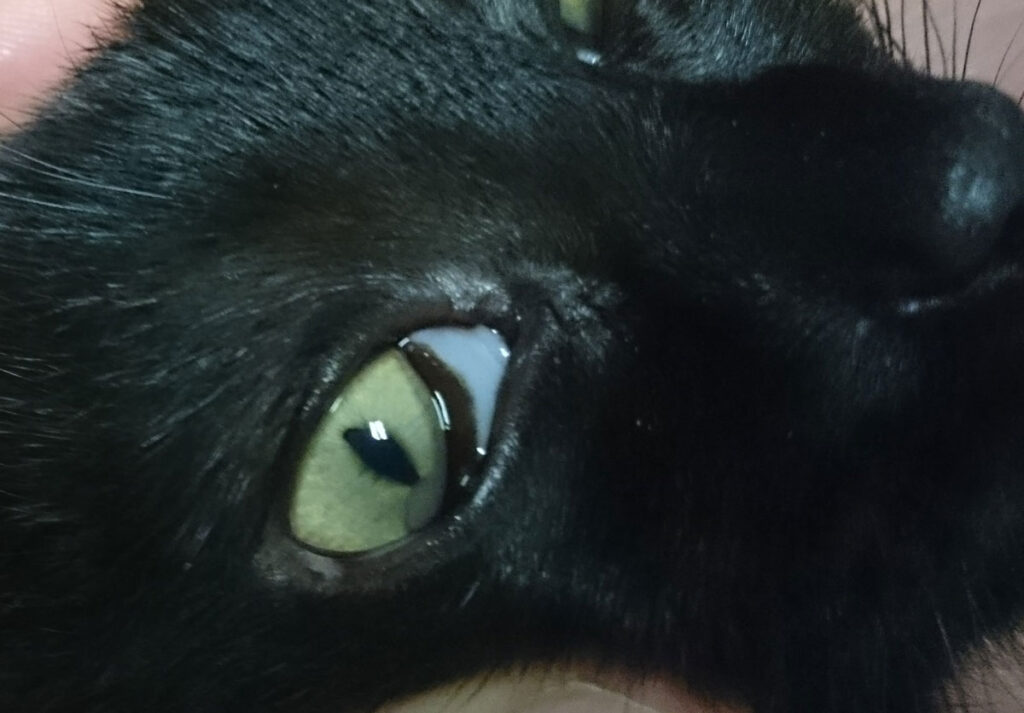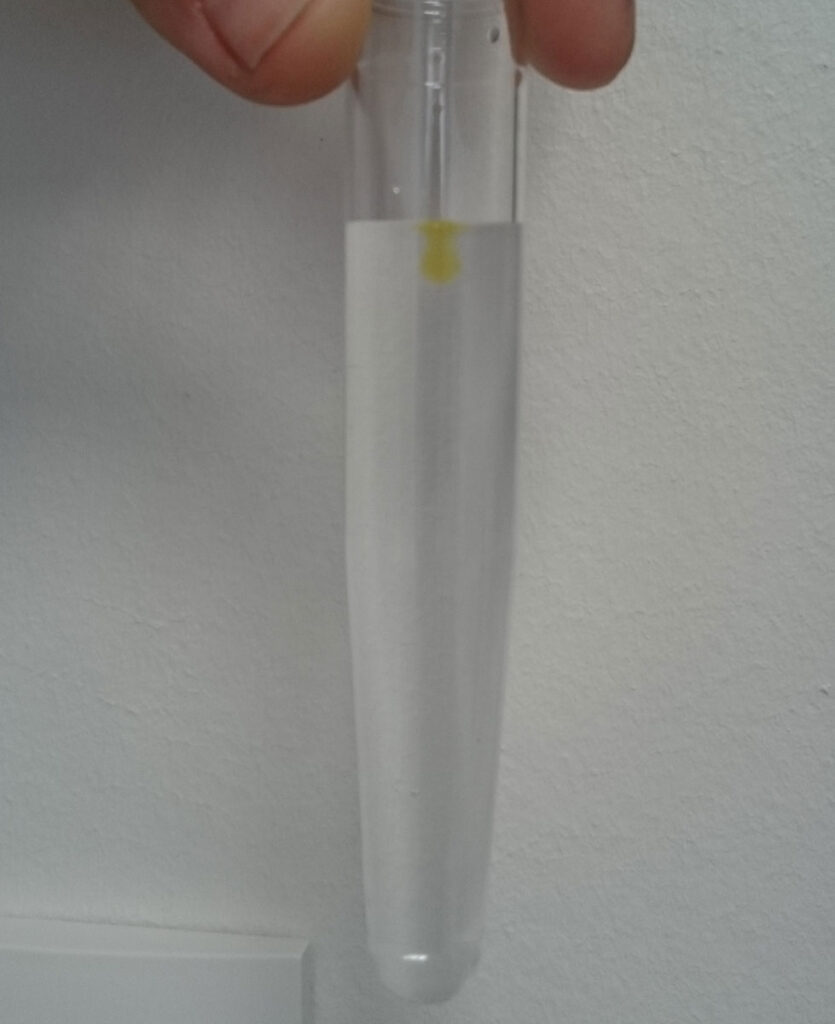Until recently, feline infectious peritonitis (FIP) was a fatal disease that could only be detected by pathology. Currently, more and more options for (laboratory) diagnostics and treatment are emerging.
Several times a year, we host an exciting discussion among experts. A round in which the particular topics are discussed in a scientifically sound manner and interesting questions are answered. Below, we have summarised the most important statements about FIP for you.
Participants of the expert panel on FIP: Prof. Katrin Hartmann from the LMU Munich; her numerous studies on FIP and especially the publication on oral treatment with Xraphconn® (Mutian) containing GS-441524 have attracted attention. As an expert in laboratory diagnostics, Prof. Regina Hofmann-Lehmann from the University of Zurich provided valuable information. She has dealt in detail with PCR as part of FIP diagnosis. Prof. Wolfgang Bäumer, pharmacologist at the FU Berlin, highlighted the topic of treatment with a focus on pharmaceutical legislation. Vanessa Steppuhn is a volunteer with #gemeinsamgegenfip. The group has already cared for a total of over 3,000 cats with FIP during treatment with GS-441524.
Diagnosis
There are often requests for coronavirus antibody titres which are then equated with FIP – what can we do with these titres and what not? What kind of diagnostics do you recommend?
Prof. Hofmann-Lehmann emphasises that, unfortunately, coronavirus antibodies are not helpful in diagnosing FIP. Titre levels do not indicate whether a cat has FIP or not (Fig. 1), nor is it possible to exclude FIP based on a negative antibody test. However, testing blood, effusion fluids or tissues by PCR often provides good results. Quantification of the viruses which are present in the sample is very useful for evaluation. Faecal PCR, however, does not help in the diagnosis of FIP for an individual patient. It plays a role when managing several animals.
When Katrin Hartmann was asked whether it is always necessary to determine if a mutation has occurred, she said no. It is useful in clinically inconclusive cases with only a low viral load. For cats with typical FIP findings (Fig. 2), for which a high viral load has been detected in blood, effusion fluids or tissue, a diagnosis can be made without sequencing for the presence of a mutation. In addition, with the methods available so far, a mutation cannot be detected in all cases of FIP.
-
Fig. 1: Feline infectious peritonitis (FIP) on a cat’s eye.
Picture credits: Dr Jennifer von Luckner
-
Fig. 2: Positive Rivalta test. A diagnostic add-on, but not conclusive.
Picture credits: Jennifer von Luckner
If there was a cat with FIP in the household, what is the risk of other cats contracting the disease?
Ms Steppuhn shares her experiences on this. However, we feel that there is no increased risk for cats to acquire FIP if they move into a single cat household where the former cat had died from FIP. Theses observations match the scientific opinion that FIP is not transmitted inbetween cats but is caused by mutation from FCoV in an individual cat.
Prof. Hartmann and Prof. Hofmann-Lehmann confirm that outbreaks are due to high infection pressure combined with stress factors or genetic predispositions. FIP is not caused by transmission of the mutated feline coronavirus (FCoV) but by mutation in the individual itself. There are no tests available that can reliably identify a predisposed cat. It is currently assumed that frequent reinfection with FCoV increases the probability of developing FIP. Therefore, hygiene and the isolation of high-level shedders are of major importance.
FIP treatment and its legal aspects
Everyone talks about the achievements with the nucleotide analogue GS-441524. The expert panel has dealt with this topic in depth.
One of the first questions was addressed to Ms Steppuhn. It referred to the personal experiences with GS-441524 in the group.
Ms Steppuhn reported that the results were very good. About 90% of the cats are permanently cured. However, treatment according to the current protocol is complex. It requires daily subcutaneous injections over a period of 84 days. Moreover, veterinary care is mandatory as the patients are often in a very poor condition. In addition to the administration of the medicine itself, most cats need intensive medical care. Regular blood tests are also necessary. For the entire period, medication alone costs about 3,500 euros. However, oral treatment will certainly be of great importance in the future.
From her own experience in dealing with the oral drug Xraphconn®, which was successfully tested at the LMU, Prof. Hartmann can confirm that (often intensive) veterinary care is essential for patients with FIP.
Remdesivir is a so-called prodrug of GS-441524 and is metabolised in the body. Since 1st June 2021, it can be ordered by hospital pharmacies and is approved. So should an off-label use not actually be possible?
Prof. Bäumer basically confirms this. However, it does not mean that it is also available for veterinarians. This is because the approval only refers to hospital pharmacies. Veterinarians are not able to acquire it.
The next question naturally arises: Are there any efforts by the manufacturer Gilead to get GS-441524 approved?
Prof. Bäumer had already made enquiries about this in advance. He reads out a message from Gilead that this is not the case. He emphasises that there are no approved formulations of GS-441524 on the market that can be legally obtained by veterinarians, even if internet entries by certain suppliers suggest so.
Prof. Hartmann adds that the BOVA pharmacy in England can legally reformulate the substance GS-441524 as long as it is not available on the market as an approved drug. At present, the development of an oral formulation is being studied. A large-scale, long-term scientific study is planned.
However, Prof. Bäumer points out that, apart from scientific studies, the hands of German veterinarians are still tied. The product is not approved for veterinary use in the EU and may therefore not be imported.
How about black market imports? What sort of punishment is there?
Prof. Bäumer emphasises: The import of the substance GS-441524 by a veterinarian is a criminal offence. Veterinarians risk losing their licence to practise.
What are the legal options for veterinarians to make owners aware of the treatment and to support them during treatment?
Prof. Bäumer confirms that veterinarians do not commit a criminal offence if they recommend treatment with GS-441524, even if this drug does not have approval.
If an animal owner administers an unapproved substance under the supervision of a veterinarian, it should not be a problem. However, veterinarians should not use a substance given to them by the animal owner.
Because of the large number of participants, some questions remained unanswered. We have therefore compiled a few important questions on diagnostics below.
The immunohistochemical examination of a biopsy specimen for the presence of FCoV is still considered the gold standard in the diagnosis of FIP. Yet, quantitative PCR is becoming more and more important.
Is it possible to perform immunohistochemistry in Germany?
Yes, it is offered, for example, by Laboklin and is performed on biopsy specimens.
Immunocytology, in contrast, is not provided by Laboklin since study results cast doubt on the sensitivity and specificity of FCoV staining of cytology specimens (Felten et al., 2017; Hellemans et al., 2020; Litster et al., 2013).
How does quantitative PCR compare to immunohistochemistry?
Positive immunostaining of biopsy material (= immunohistochemistry) is very specific and reliable. A positive result is considered conclusive. However, a negative result does not completely rule out FIP, as FCoV can be spread differently in the tissue. Depending on the histological findings, further sections should be cut if in doubt. In such cases, getting in touch with the pathologist can be very useful (Stranieri et al., 2020; Tasker, 2018).
Depending on the sample to be examined, realtime PCR (RT-PCR) in tissue probably comes close to immunohistochemistry (IHC). For instance, no significant difference was found for lungs and
liver. For other organs, IHC had a clear advantage, especially in terms of specificity (fewer false positive results). This study referred to above did not provide details on quantification (Stranieri et al., 2020). With both methods, it is important to take samples from tissue that appears altered.
For the practice, however, comparing quantitative PCR in a fluid (e. g. abdominal/thoracic puncture) with IHC in an organ is more relevant. In other words, the question of whether PCR in a puncture fluid can be sufficient for making a diagnosis and thus render it unnecessary to take a biopsy sample. It is much more difficult to make a definite statement about this. For aqueous humour and cerebrospinal fluid, study results are highly variable, and the reliability of PCR results is questionable. There are also different results for blood. The reliability of PCR probably depends on what patient is selected and the quality of the method used. In studies, sensitivities of 72 – 100% have been reported for RT-PCR in puncture fluids, with only a few false positive results. If a high viral load is detected by quantitative PCR and suspicious symptoms are present at the same time, FIP is very likely. Then, in most cases, there is no need for confirmation by IHC. However, if there is only a low viral load and/or there is little clinical evidence of FIP, IHC is certainly the more reliable detection method (Barker et al., 2017; Doenges et al., 2016; Dunbar et al., 2019; Felten et al., 2017; Stranieri et al., 2018; Stranieri et al., 2020).
Does Laboklin offer quantitative PCR testing for coronavirus and if so, which material is used for it?
Yes, Laboklin offers quantification (= determination of FCoV copy numbers in a sample). Previously, this was only done in faeces, but it is now also possible in EDTA blood and puncture fluids.
If tissue is obtained by fine-needle aspiration, interpretation of the findings is difficult because the actual cell content in the sample is not apparent when it is submitted. Quantitative data should always refer to a measurement unit (mg faeces, ml blood/puncture fluid). However, the Ct value can be obtained on request. It can provide an estimate of the viral load contained in the sample.
Is your test validated in round robin tests?
Laboklin is an accredited laboratory. This means that proficiency tests are regularly carried out in all areas. Thus, PCRs are also reviewed accordingly.
Dr. Jennifer von Luckner
References:
-
Barker EN, Stranieri A, Helps CR, Porter EL, Davidson AD, Da MJ. Limitations of using feline coronavirus spike protein gene mutations to diagnose feline infectious peritonitis. Vet Res. 2017; 48: 60.
-
Doenges SJ, Weber K, Dorsch R, Fux R, Fischer A, Matiasek LA. Detection of feline coronavirus in cerebrospinal fluid for diagnosis of feline infectious peritonitis in cats with and without neurological signs. J Feline Med Surg. 2016; 18: 104-109.
-
Dunbar D, Kwok W, Graham E, Armitage A, Irvine R, Johnston P, McDonald M, Montgomery D, Nicolson L, Robertson E, Weir W, Addie DD. Diagnosis of non-effusive feline infectious peritonitis by reverse transcriptase quantitative PCR from mesenteric lymph node fine-needle aspirates. J Feline Med Surg. 2019; 21: 910-921.
-
Felten S, Matiasek K, Gruendl S, Sangl L, Wess G, Hartmann K. Investigation into the utility of an immunocytochemical assay in body cavity effusions for diagnosis of feline infectious peritonitis. J Feline Med Surg. 2017; 19: 410-418.
-
Hellemans A, Acar DD, Stroobants VJE, Theuns S, Desmarets LMB, Nauwynck HJ. A comparative study of techniques used for the diagnosis of effusive feline infectious peritonitis. Vlaams Diergeneeskundig Tijdschrift, 2020; 89: 100-110.
-
Litster AL, Pogranichniy R, Lin T-L. Diagnostic utility of a direct immunofluorescence test to detect feline coronavirus antigen in macrophages in effusive feline infectious peritonitis. Vet J. 2013; 198: 362-366.
-
Stranieri A, Scavone D, Paltrinieri S, Giordano A, Bonsembiante F, Ferr S, Glain ME, Meazzi S, Lauzi S. Concordance between Histology, Immunohistochemistry, and RT-PCR in the Diagnosis of Feline Infectious Peritonitis. Pathogens. 2020; 9(10):852.





